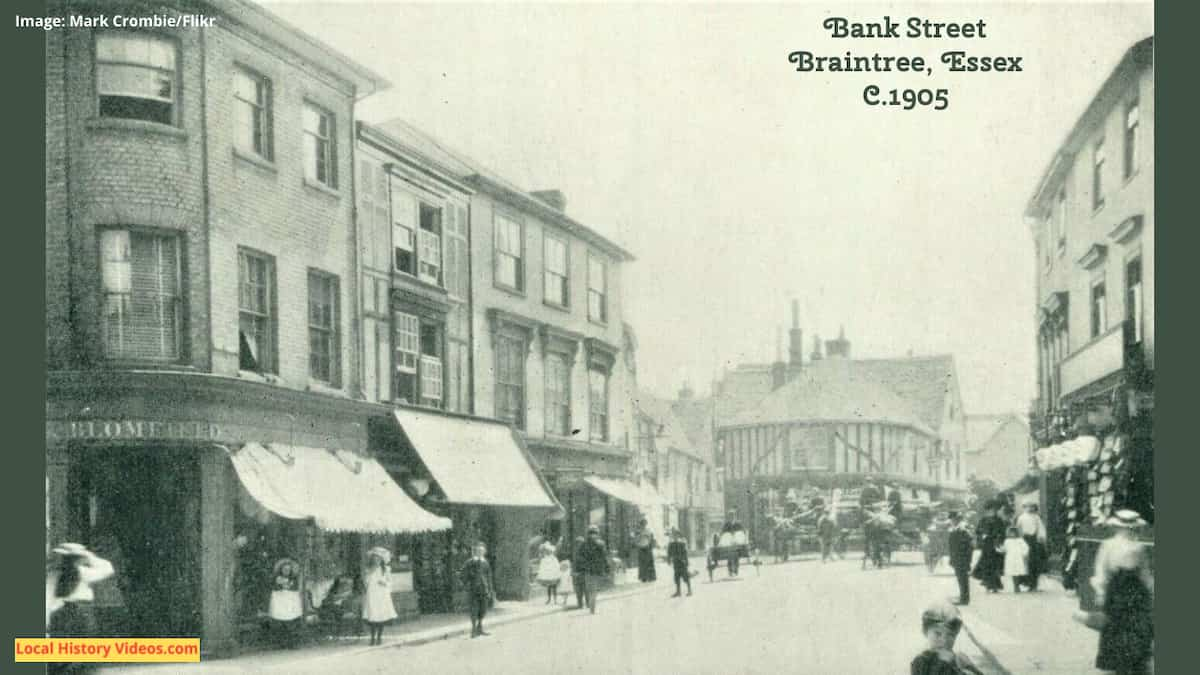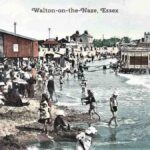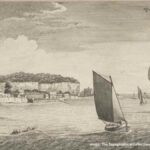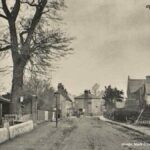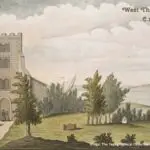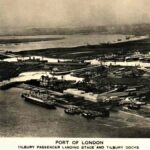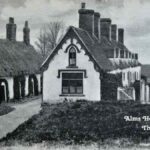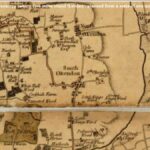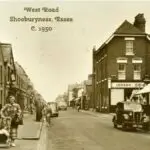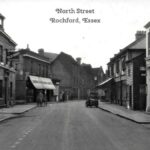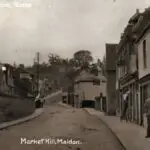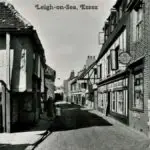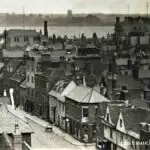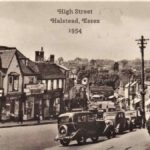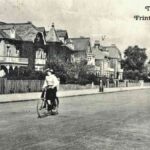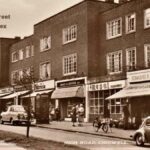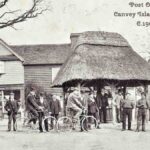Glimpse history through old images of Braintree, Essex, England.
Braintree’s Concrete Housing
Building with concrete had been common in Britain during the Roman occupation. But knowledge about the use of concrete disappeared when the occupying forces suddenly left in 410 AD and the country was plunged into chaos for a long period.
By the early twentieth century, high rise concrete buildings were making an entrance in the United States, and British architects took notice.
1919 was the year after the Great War, later known as World War II, ended. There was a shortage of employment and housing for the men returning from the conflict zones across Europe and beyond.
It was under these conditions that concrete was used to build new homes in Braintree, and the material was so unusual that a filmmaker recorded the process.
Notice the huge loads men are pushing in the carts.
Concrete house being built at Braintree (1919) – British Pathé on YouTube
Braintree in the 1950s
E.F. Bateman was an amateur filmmaker. In 1958, he recorded life in and around Braintree on black and white silent film.
The 23 minutes of film include the heavy snows enjoyed by local children, the first Essex County Show on a permanent site which found itself beset by mud thanks to the heavy rain, an open day at the College of Further Education, the wettest June for 50 years with flooding at Stisted and Bradwell, Morris Dancing in Braintree’s Market Square, and many other events.
Braintree, 1950’s – Film 8711 – HuntleyFilmArchives on YouTube
Historic Book
Extract from “The British Gazetteer, Political, Commercial, Ecclesiastical, and Historical Showing the Distances of Each Place from London and Derby–gentlemen’s Seats–populations … &c. Illustrated by a Full Set of County Maps, with All the Railways Accurately Laid Down …” by Benjamin Clarke
Published in 1852
Pages 382 – 383
BRAINTREE , Essex , a market town and parish
in the hund of Hinckford , union of Braintree : 46
miles from London ( coach road 40 ) , 11 from
Chelmsford . East . Co Rail , to Braintree :
from Derby , through London , & c . , 178 miles .
Money orders issued here : London letters deliv
7 a.m .: post closes 7 p.m.
Braintree is
long , straggling , but interesting town , the edifices
of which are mostly very ancient , and many of
them are built of wood .
It is situated on a rising
ground , and connected on the north with Bocking ,
or Bocking Street , one of the most considerable
villages in Essex .
In the account in Doomsday
book , the manor is comprehended with that of
Raines , and was then held by the Bishop of Lon
don , to whose see it remained attached till the
time of Edward VI . , by whom it was granted to
James Mitchell , whose heirs passed it to John
Godfrey , by whom it was sold to Richard , Lord
Rich , who settled the rectory , pro tempore , upon
the school and almshouses at Felsted , to pay £ 30 .
1s . 8d . in money , and a certain allowance in malt
and wheat .
In his family it remained till about
the year 1763 , when , on the death of Charles ,
Earl of Warwick , it became the property of his
sister and co – heiress , Lady Frances , wife of Nicho
las , son of Sir Francis Leak , Earl of Scarsdale ,
whose successor sold the estate to Herman Olmins ,
ancestor of the late Lord Waltham .
The mansion
house was at one time a palace of the bishops of
London , but it has long since been destroyed .
Braintree was made a distinct parish about the
time of King John , or during the reign of Henry
III . , the former of whom erected it into a market
town at the intercession of William de St. Maria ,
one of the bishops of London .
At that time ,
however , it was , we suppose in consequence of
following the announcement in Doomsday – book ,
only a hamlet to Raines , and the parish itself
went under the denomination of Great Raine ;
but as houses and population increased , Braintree
gradually grew to be far the most considerable
place of the two , and gave its own name to the dis
trict .
It was conveniently situated on the high
way from London into Suffolk and Norfolk ; and as ,
during the days of papal superstition , pilgrims
were continually travelling from the south to the
shrines of our Lady of Walsingham and St. Ed
mund , lodging – houses and inns were built for their
accommodation ; and so the place grew in population
and extent .
After the Reformation , this source of
advantage ceased ; but the town was speedily re
suscitated , for not long after Elizabeth had declared
England to be the asylum of persecuted protes
tantism , Braintree became the settlement of a
number of Flemings , who had been driven from the
Netherlands by the Duke of Alva , and who intro
duced a species of woollen manufacture , the fabric
of which is called by and say .
That business has
declined , but another for the manufacture of silk is
still to some extent pursued .
The church , which
is a spacious structure , stands on the ridge of a
mound , which is supposed to have been a Saxon or
Roman intrenchment , most probably the latter ; it
is about half a mile from the site of the former
church , which stood near the bishop’s palace , and
of which some remains still exist . The interior
consists of a nave , chancel , and side aisle ; a lofty
spire , which is cased with slate , rising from the
west end of the fabric ; the body of the church is
composed chiefly of flint .
It was founded , as ap
pears by the arms of the neighbouring gentry who
lived at that time , which decorate it , in the reign of
Edward 111. , and as well also by the will of John
Nayland , dated in 1349 , who left a black bullock to
further the work of the church . It was , however ,
much enlarged after its original foundation , espe
cially during the reign of Henry VIII . , when the
roof was elevated and the south aisle built ; and
it is a singular characteristic of the times , that
these alterations were effected chiefly through the
aid of three plays performed in the church . The
first , which was entitled St. Swithin , was acted
in 1523 ; the second , called St. Andrew , on the
Sunday called Relique Sunday , in 1525 ; and the
third , called Placy Dacy , alias St. Ewestacy , in 1534.
It is not at all surprising that , after the
Reformation , the players ‘ robes were sold ; but it is
a little remarkable that they brought fifty shillings ,
and the playbooks twenty shillings .
In the chan cel there is a monument to Dr. Samuel Collins , who
was the son of a minister in this parish , and for
some years principal physician to Peter the Great
of Russia .
The Independents , Methodists , Bap
tists , and the Society of Friends , have all places of
worship here .
The Independent church is a very
fine building , built in 1832 , and seats 1,500 . The
old Baptist congregation was formed in 1680 , and
the second in 1835.
A school here is endowed
with £ 63 per annum ; and in the British school ,
about 200 boys and 60 girls are educated .
There
is a fund here of £ 350 per annum , derived from an
estate at Tolleshunt D’Arcy , purchased with the
sum of £ 2,800 , left by Henry Smith , Esq . , Alder
man of London in the time of Charles I. , for the
benefit of the poor of this parish . The other paro
chial eharities produce about £ 130 a year .
Brain
tree is only divided from Bocking by the turnpike
road . It is one of the polling – places for North
Essex , and the petty sessions for the southern
division are held here .
The manufacture of silk
is still carried on for the London markets , though
to but little extent .
The Braintree poor – law union
comprises fourteen parishes ,
spread over an area of 63
square miles , and comprises a
population of something
more than 15,000 souls – the
average expenditure being
about £ 97,000 .–
The living
( St. Michael ) , a disch
vicarage , formerly in the archd
of Middlesex , diocese of
London , now in the diocese
of Rochester , is valued at £ 12 .
13s . 4d .: pres ,
net income , £ 212 : patron , Rev. J.
Lewis : pres .
incumbent , B. Scale , 1796 : contains
2,500 acres : 708
houses : pop in 1841 , 3,670 :
probable pop in 1849 ,
4,220 : ass prop
rates in 1838 , £ 2,518 . –
Market
day . Fairs : May 8 , cattle ;
Oct.
£ 4,493 : poor
day , Wednes
2 , cattle and hops.
More about Essex
- Old Images of Essex, England
- Old Images of West Hangingfield, Essex
- Old Images of Purfleet (Purfleet-on-Thames), Essex
- Old Images of Wickford, Essex
- Old Images of West Thurrock, Essex
- Old Images of Walton-on-the-Naze, Essex
- Old Images of Tilbury, Essex
- Old Images of Thaxted, Essex
- Old Images of South Ockenden, Essex
- Old Images of Shoeburyness, Essex
- Old Images of Rochford, Essex
- Old Images of Maldon, Essex
- Old Images of Leigh-on-Sea, Essex
- Old Images of Harwich, Essex
- Old Images of Harlow, Essex
- Old Images of Halstead, Essex
- Old Images of Frinton-on-Sea, Essex
- Old Images of Chigwell, Essex
- Old Images of Canvey Island, Essex
- Old Images of Burnham-on-Crouch, Essex

